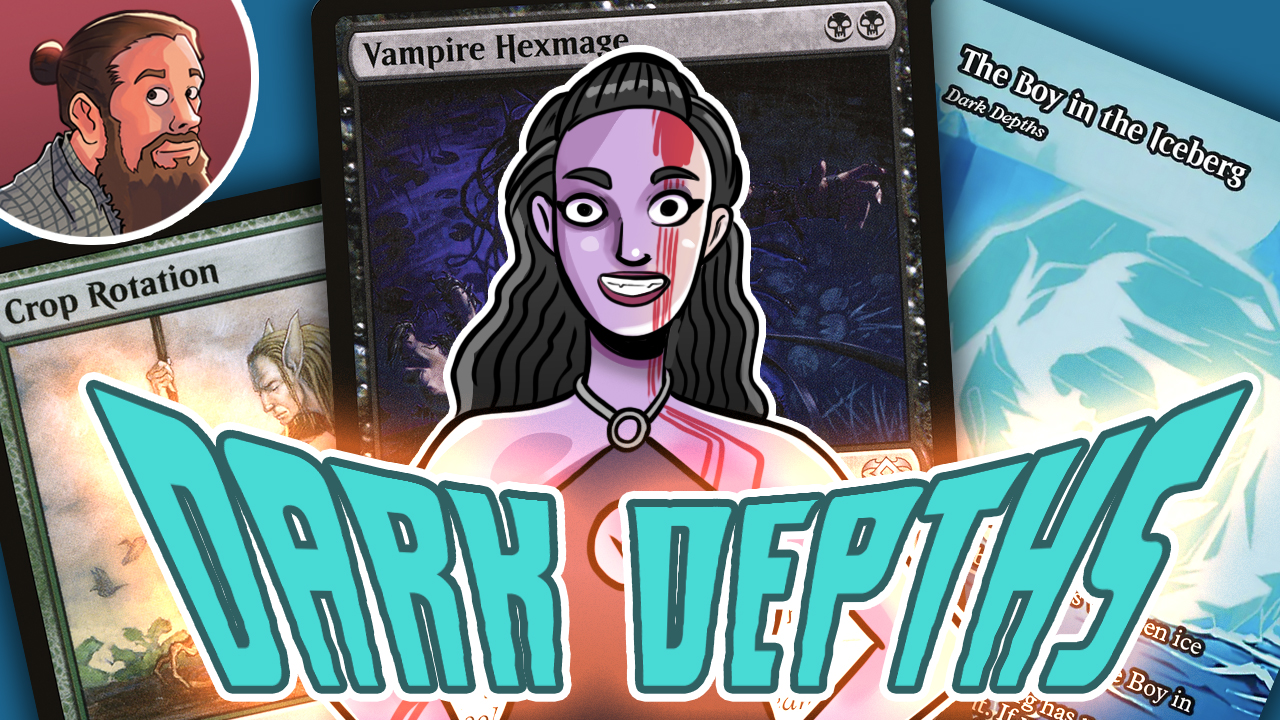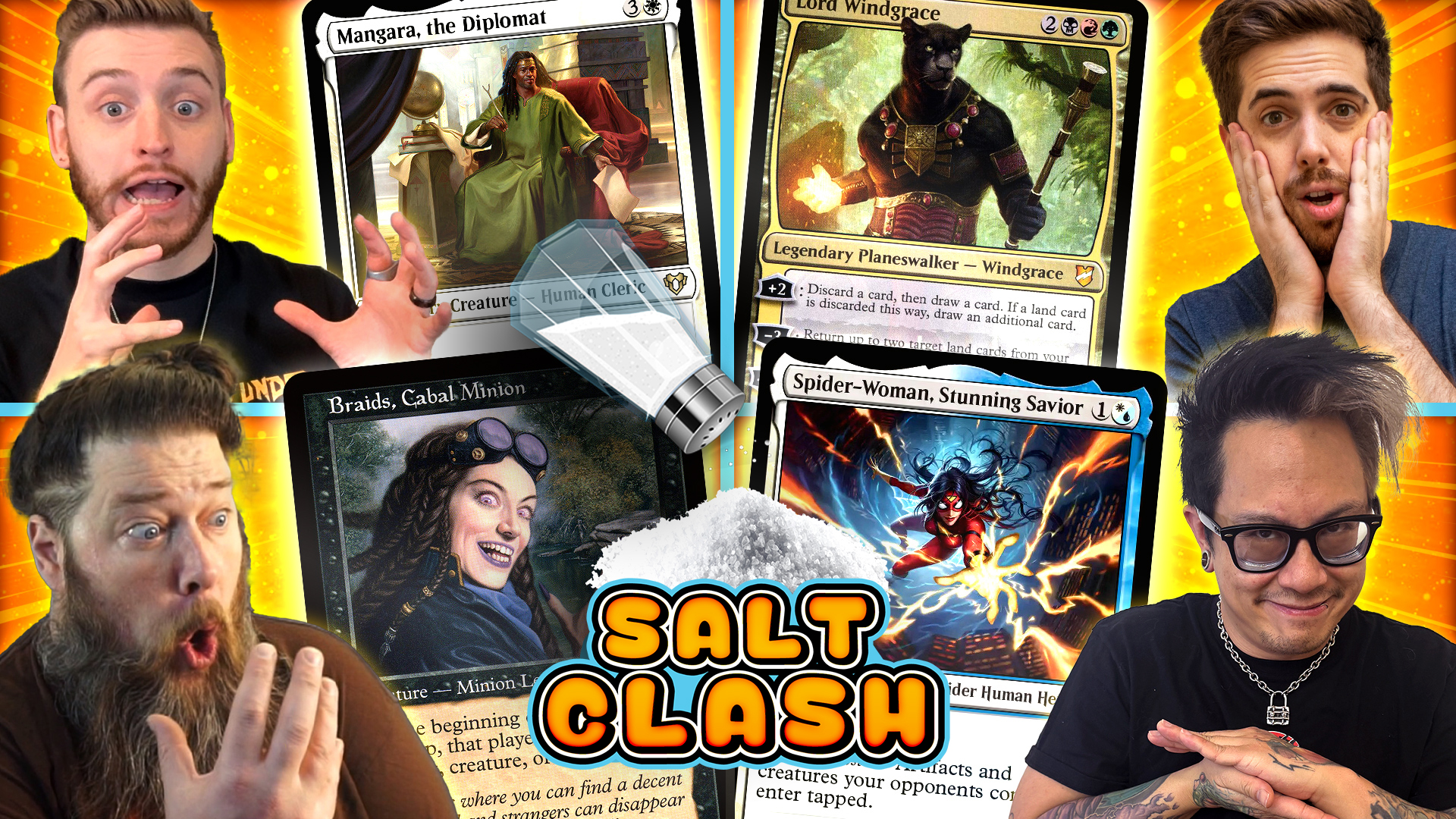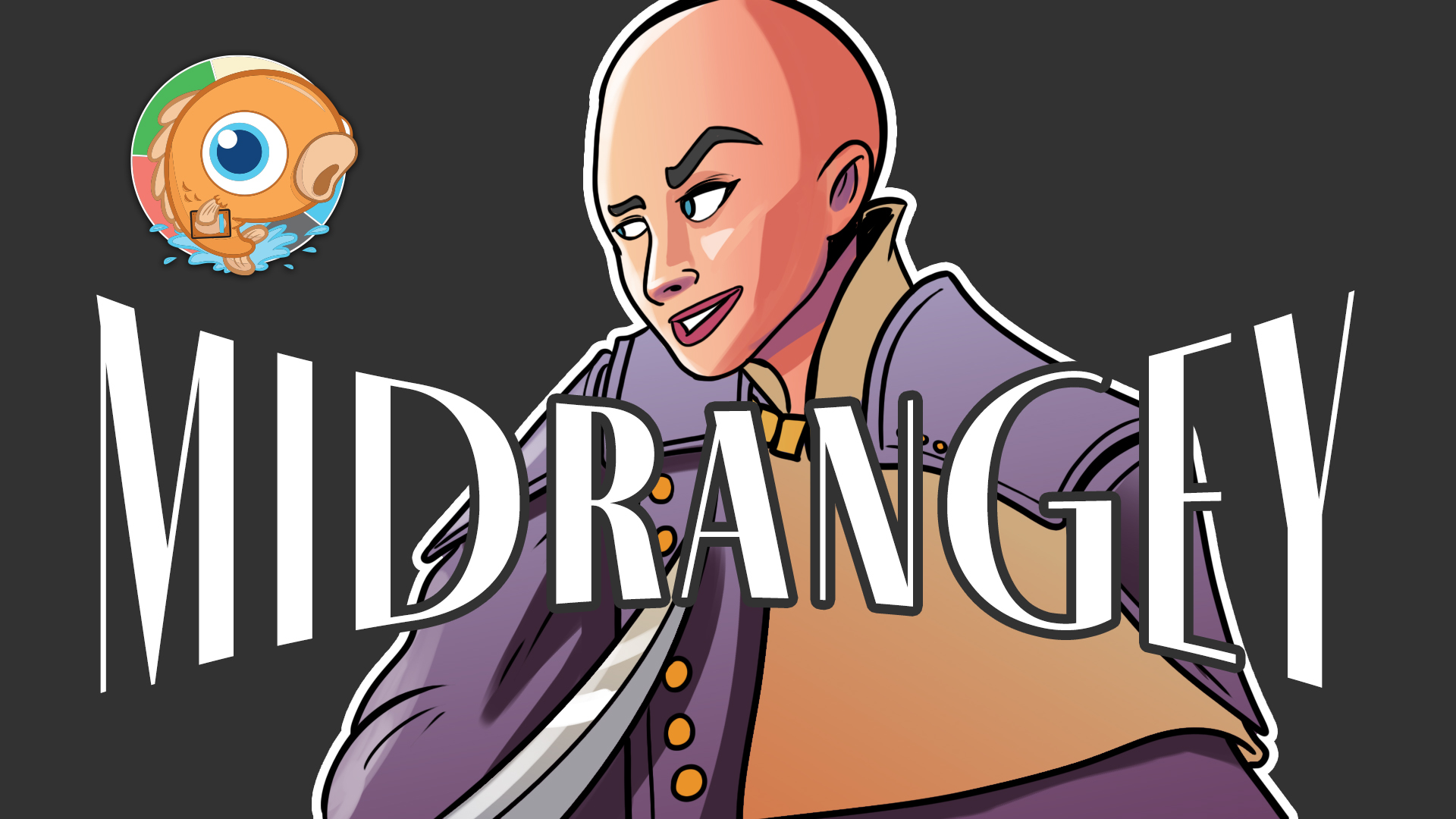Budget Magic: $57 (22 tix) Turbo Turns Standard
Salud Budget Magic lovers! It's that time again. This week we have what is easily my favorite budget deck in Battle for Zendikar Standard, Turbo Turns. What if I told you you could play a Standard deck that is not only competitive, inexpensive ($57 in paper and 22 tix online), but also wins the game by taking three, four, or even five turns in a row while beating down with awakened lands? That's Turbo Turns in a nutshell, and it's awesome!
Let's get to the videos, then we'll talk more about the deck. A quick reminder. If you enjoy the Budget Magic series and the other video content on MTGGoldfish, make sure to subscribe to the MTGGoldfish Youtube Channel to keep up on all the latest and greatest.
Turbo Turns Intro
Turbo Turns vs Esper Tokens
Turbo Turns vs White Weenie
Turbo Turns vs Four-Color Dragons
Turbo Turns vs Jeskai Black

The Deck
Probably the easiest way to break down and understand the power of Turbo Turns is to look at what the deck is capable of. While some of our spells might seem underpowered, they all fit into very specific slots on the curve, allowing us to maximize the efficiency of our primary plan: take as many turns as possible!
Turn Two
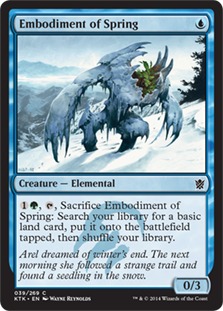
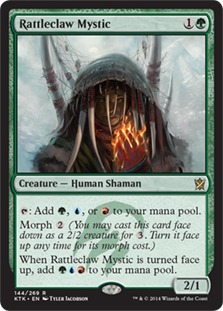
While Embodiment of Spring is technically a one drop, it's really a two mana play that has to sit on the battlefield for a turn before taking effect. In reality both Embodiment of Spring and Rattleclaw Mystic are two drop ramp spells. It might seem strange that we are playing Embodiment of Spring over something like Leaf Gilder or Whisperer of the Wilds, but it's the better card for our deck. Not only does it ramp us, it fixes our mana. More importantly, it goes to the graveyard, which helps us pay for some of our expensive delve spells. Rattleclaw Mystic is solid because she taps for Green and Blue, the two most important colors in our deck. Plus, she can attack in the late game, which is sometimes relevant while we combo off. Either way, the reason both of these cards are in our deck is that they can get us to four mana on turn three.
Turn Three
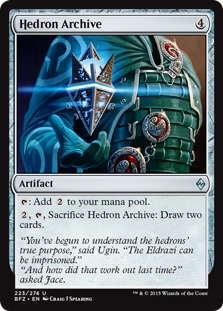

After ramping to three mana on turn two, we make our land drop on turn three and immediately ramp with one of our four drops: four copies of Hedron Archive and four Explosive Vegetations. Which of these two cards are better depends on the situation. Hedron Archive is preferable in the late game. In the worst case it's a six mana, colorless Divination. Explosive Vegetation is usually better on turn four because it makes sure we have the right mana to cast our spells. That said, we aren't all that picky. The main goal is to go from four to six mana by the end of turn three.
Turn Four

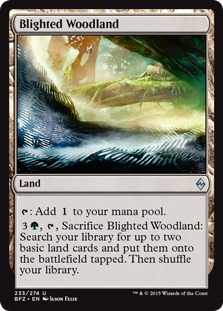
Assuming we make our fourth land drop, we start turn four with access to seven mana. That number may seem like a lot, but it's not nearly enough for our deck. Here, the most powerful thing we can do is play Nissa's Renewal, which ramps us all the way to 10 mana and gains us enough life to put us out of danger of dying to an aggressive opponent. If we don't have one of our four Nissa's Renewals, we can use Blighted Woodland to get up to eight mana. Likewise, we can play another copy of Explosive Vegetation or Hedron Archive, bringing us to nine mana. No matter how we piece it together, our goal is to end turn four with at least nine mana. Once we get to ten mana the real fun begins.
Turn Five Plus
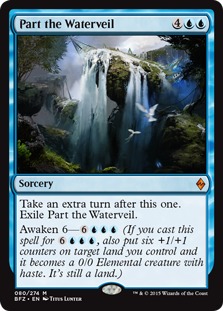
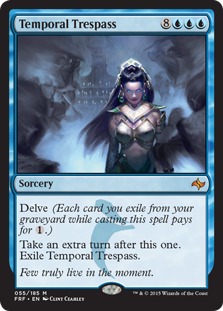
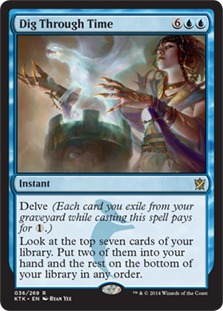
Once we get to ten mana, which can happen as early as turn five, our game plan is to take some extra turns — in fact, all the turns — until we win the game. While I'm sure the videos will do a better job explaining this process than I can in writing, the basic idea is that at ten mana we use Part the Waterveil to awaken an untapped land and attack for six damange. During our extra turn we play another Part the Waterveil or a Temporal Trespass and keep attacking with our land(s). We do this two, three, four, or even five times and win the game before our opponent gets a chance to untap.
Dig Through Time's main purpose it to make sure we find additional copies of Temporal Trespass and Part the Waterveil. While taking one or two extra turns is often enough, other times we need three or four extra turns to win the game. Dig Through Time allows us to delve away all those ramp spells we cast early in the game and turn them into more "take another turn" spells. It can also find a copy of our other key card, Planar Outburst.
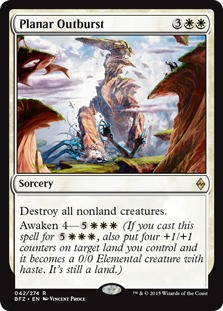
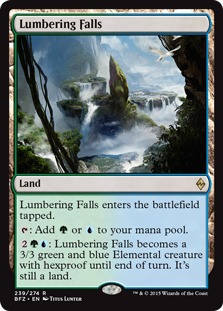

When I first started building this deck, it was more of a Blue-Green Turbo Fog list. While the initial build was very good at stalling and taking extra turns, I found it had a really hard time winning the game. Sometimes we would attack with an 6/6 land three or four times, but not get in any damage because our opponent would chump over and over again. Planar Outburst is the solution to this problem. It allows us to cast Part the Waterveil to make a 6/6 land. During our extra turn we can clear our opponent's board with Planar Outburst. We can then awaken a land to attack for ten damage, or cast another Temporal Trespass or Part the Waterveil to take yet another turn. While our "take an extra turn" spells and Dig Through Time are cards that allow us to combo off, Planar Outburst might be the most important card in the entire deck. Casting it is often necessary for us to win the game.
Lumbering Falls is another key addition for a couple reasons. First, it allows us to play around our opponent's removal. If we think our opponent may have a Murderous Cut or Stasis Snare to ruin our combo, we can simply animate a Lumbering Falls and put our awaken counters on it. Second, and more often, it attacks alongside our awakened basics to get in additional damage. In our current fetchland heavy Standard format, most opponents start at 18 (or less) life thanks to fetching. This tendency means that one copy of Part the Waterveil and two Lumbering Falls adds up to the exact damage to kill our opponent with just one extra turn on an empty board. We can awaken a basic land with Part the Waterveil and attack our opponent for six damage down to twelve. During our "extra" turn we can animate two copies of Lumbering Falls to attack alongside the awakened land for 12 damage — lethal.
Finally, Quarantine Field is our catch all. One very random card that shuts down our combo is Citadel Siege. It can tap down our awakened land every turn, no matter how many extra turns we take. Quarantine Field can exile it and free up our 6/6 to get in damage. It can also be the most expensive sweeper of all time. It's not uncommon for our deck to get up to 16, 18, or even 20 mana, at which point we exile everything on our opponent's side of the board.
Why Play Turbo Turns Over Eldrazi Ramp?
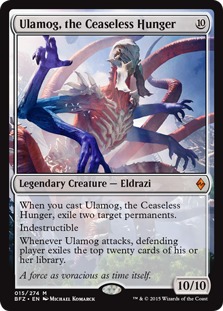

As I'm sure you noticed, apart from the "extra turns" our deck looks a lot like an Eldrazi Ramp deck. As such I felt it was important to address why you should play Turbo Turns over something like Mono-Green or Red-Green Eldrazi Ramp. If you follow the Budget Magic series, you'll know that we've played a couple Ulamog, the Ceaseless Hunger decks over the past few weeks, and I can tell you that it's very possible to resolve an Ulamog, the Ceaseless Hunger, exile a couple lands, have your Ulamog die, and you go on to lose the game. Part of the problem is Ulamog, the Ceaseless Hunger allowing your opponent to untap.
With Turbo Turns, we can wait for the perfect moment to combo off. Preferably, while our opponent is tapped out. Once we start taking extra turns, our opponent never gets to untap. There isn't really a window to kill our win condition or disrupt our combo. It's extremely hard to lose while "going off," especially if you wait as long as possible and strike when the moment is right. That is the main advantage of Turbo Turns over other ramp decks.

The ultra-budget version of Turbo Turns has two major downgrades. The first is Rattleclaw Mystic into Leaf Gilder, which means our mana dork can only tap for Green instead of Blue and Green. This honestly isn't a big deal since we have so much mana fixing among our ramp spells. The bigger issue is turning Dig Through Time into Treasure Cruise. Our deck doesn't care so much about raw card advantage. Instead, we are looking for specific cards, which means Dig Through Time is miles ahead of Treasure Cruise. Unfortunately, the list is pretty tight, so these were really the only cuts that could get the deck into the $30 range.
Summary: Leaf Gilder over Rattleclaw Mystic is fine, but I wouldn't want to play this deck without Dig Through Time.
Non-Budget Turbo Turns

I tried to put together a non-budget version of the deck, but I realized I couldn't change the deck enough to make it worthwhile. I figured we could add some fetches and Battle for Zendikar duals, but I think this actually makes the deck worse. We already get into situations where we run out of basic lands with Explosive Vegetation and Nissa's Renewal. Adding more non-basics would only make it worse. The one card I would consider is a copy or two of Ugin, the Spirit Dragon, probably over Monastery Siege and Quarantine Field. Ugin does basically the same thing as Planar Outburst, sweeping away our opponent's board while leaving awakened lands alive. The upside is it can also Lightning Bolt our opponent's face and exile non-creatures. Otherwise, I'd leave the deck as is, regardless of how much you are willing to spend.
Conclusion
Anyway, that's all for today. Overall, I think Turbo Turns is quite competitive. It has a positive overall win percentage, though it does suffer from the "draw the wrong half of the deck" problem of all ramp decks. When we get a nice mix of ramp spells and finishers, we can crush just about any deck. Other times we look at an opening hand of three lands, a Nissa's Renewal, two Temporal Tresspasses, and a Part the Waterveil. Regardless, Turbo Turns is amazingly fun to play. It can beat anything with good draws and has the "wow" factor characteristic of great decks.
As always, leave your thoughts, ideas, improvements, and opinions in the comments. You can reach me on Twitter (or MTGO) @SaffronOlive.



